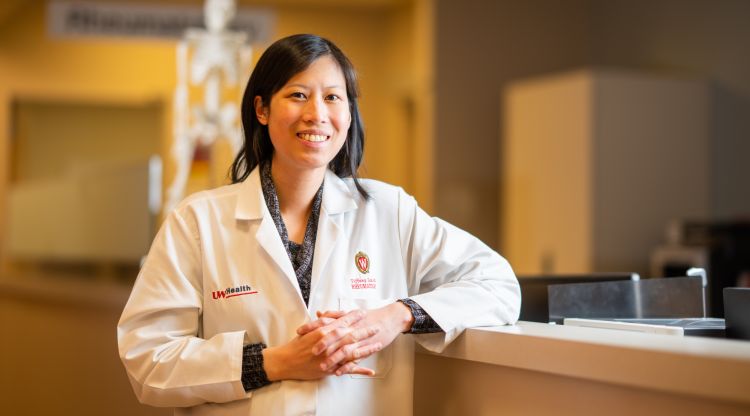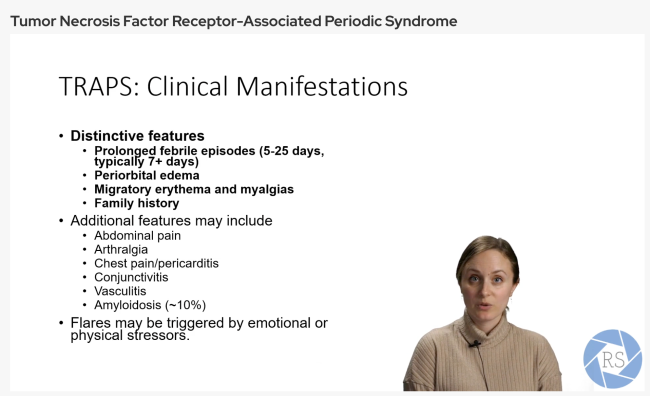Dr. Tiffany Lin spotlights a virtual basic science curriculum for Rheum fellows on the national stage
Basic science for busy fellows

Tiffany Lin, MD, associate professor, Rheumatology, has developed an innovative virtual curriculum for rheumatology fellows that connects basic science concepts to clinical situations, potentially addressing a common gap in subspecialty medical education.
“These are concepts that underpin so much of medicine, but a lot of programs don’t have the in-house expertise or person power to meaningfully deliver them to our clinical fellows,” says Dr. Lin, who directs the University of Wisconsin (UW) Rheumatology Fellowship. “This provides a concise, practical, and relevant solution.”
Her curriculum, Rheum Snapshots, is currently in a pilot phase with the UW Department of Medicine (DOM) Rheumatology fellows—but already it shows such promise that it was one of only five innovations spotlighted in an oral presentation at the American College of Rheumatology (ACR) Educators Conference this March.
What is it?
At its core, Rheum Snapshots is an online library of video microlearning modules.
Each starts with a case-specific clinical context, then unpacks a key scientific concept underlying the pertinent pathophysiology.
For example, one module reviews proinflammatory cytokines and their role in the pathophysiology of a patient with tumor necrosis factor receptor-associated periodic syndrome (TRAPS). It then asks: how can this information inform diagnosis and treatment?
“Rheum Snapshots is something our clinical fellows have been asking for: basic science through the lens of someone who is directly caring for patients,” Dr. Lin explains.
Rheum Snapshots is something our clinical fellows have been asking for: basic science through the lens of someone who is directly caring for patients.
Tiffany Lin, MD
Short and self-directed
Most of the modules take less than ten minutes to complete.
And thanks to video composite technology (developed in partnership with the UW Department of Information Technology) each module’s presenter appears in front of the slides they are presenting.

The effect is a more immediate, intimate learning experience than can be had with an audio recording and slide deck alone.
The curriculum is also self-directed, so fellows can learn as their time allows.
How else can it be used?
Although Rheum Snapshots took time, data, outside technical expertise, and funding from a DOM Medical Education Innovation Grant to establish, Dr. Lin notes that the overall concept is meant to be freely shareable and adaptable.
“We said, let’s create something that’s going to be easy to modify and implement in other rheumatology training programs. That’s one reason I think there’s such an active interest in this curriculum when I talk about it at places like the ACR Convergence or the Educators Conference.”
In addition to presenting to rheumatology educators on the national stage, Dr. Lin is working with colleagues at the Medical College of Wisconsin in Milwaukee, Wisconsin, to run a second pilot of the curriculum.
“We’re thinking about what other learner groups could benefit,” she says. “It might be a little pie-in-the-sky, but there’s a chance it could be deployed widely for advanced practice providers who practice rheumatology. Even medical students!”
Get in touch
If you’re a medical educator interested in discussing the Rheum Snapshots curriculum, please contact Tiffany Lin at tclin@medicine.wisc.edu.